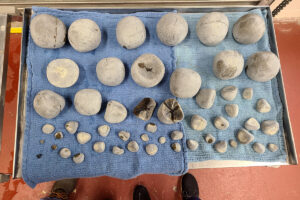Cryotherapy Methods for Laminitis Treatment Compared (AAEP 2010)
Recent surveys of equine veterinarians reveal that laminitis is the No. 1 lameness concern of equine practitioners, due how difficult it is to treat and manage this debilitating condition. On the topic of laminitis control, Heidi Reesink, VMD, a veterinary resident at Cornell University, discussed a comparison of three methods of cryotherapy (cold treatment) as measured by blood vessel temperature in the foot. Reesink noted that cryotherapy is the only treatment shown to prevent development of acute laminitis, calling it the "gold standard."
Chris Pollitt, BVSc, PhD, (2004) demonstrated the safety of prolonged immersion of the distal limbs for 48 hours to abolish associated lameness and to minimize pathologic changes related to laminitis. Reesink explained that cryotherapy controls hoof inflammation by potentially lessening metabolic tissue demands, directly inhibiting temperature-dependent enzymes, and/or reducing blood-borne delivery of inflammatory mediators.
Reesink and her colleagues set out to examine if ice-filled wader boots would be more effective at cooling the hoof than other methods. They compared an ice-filled wader boot to packing the feet to the level of the fetlock by filling 5-liter fluid bags with crushed ice slurry, or using gel ice packs replaced at 60-minute intervals. The opposite (nonchilled) limb of each horse was used as a comparative control. Reesink also wanted to determine if digital venous temperatures would approximate laminar temperatures, and if digital venous temperatures would be slightly warmer.
Nine healthy horses free of lameness or laminitis were used in the study. Before the researchers applied any trial therapy, they took pre-treatment baseline temperature readings for 15 minutes. Then they tracked each 120-minute treatment method, with periods of rewarming between each treatment. Treatment time was based on previous studies that showed minimal additional cooling is achieved after two hours of ice immersion
Create a free account with TheHorse.com to view this content.
TheHorse.com is home to thousands of free articles about horse health care. In order to access some of our exclusive free content, you must be signed into TheHorse.com.
Start your free account today!
Already have an account?
and continue reading.

Related Articles
Stay on top of the most recent Horse Health news with

















